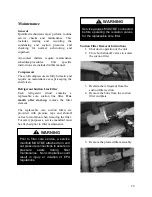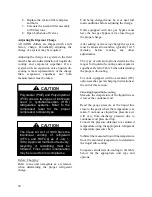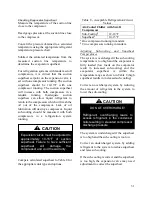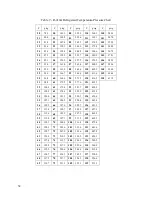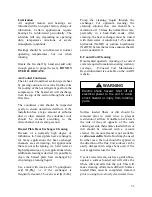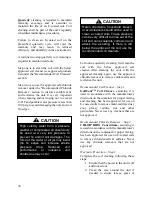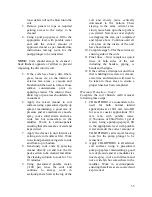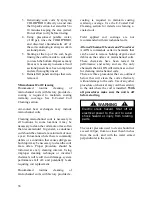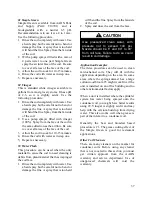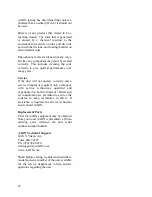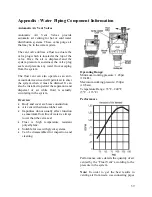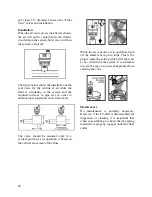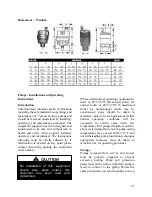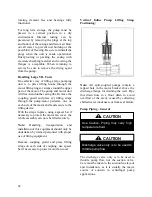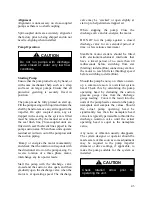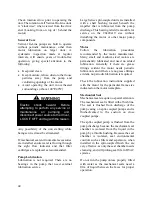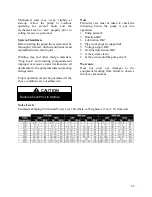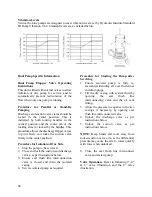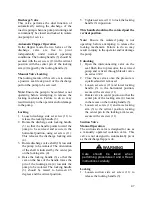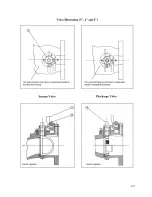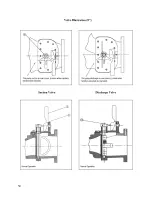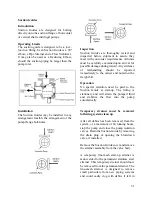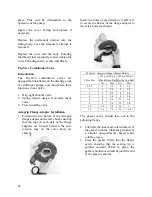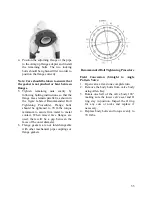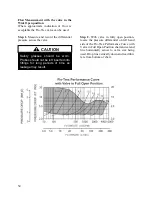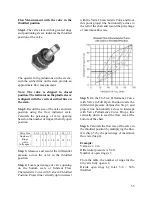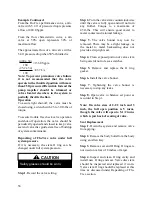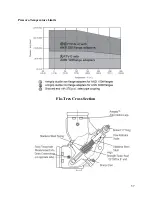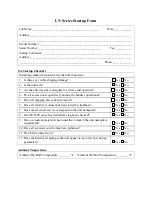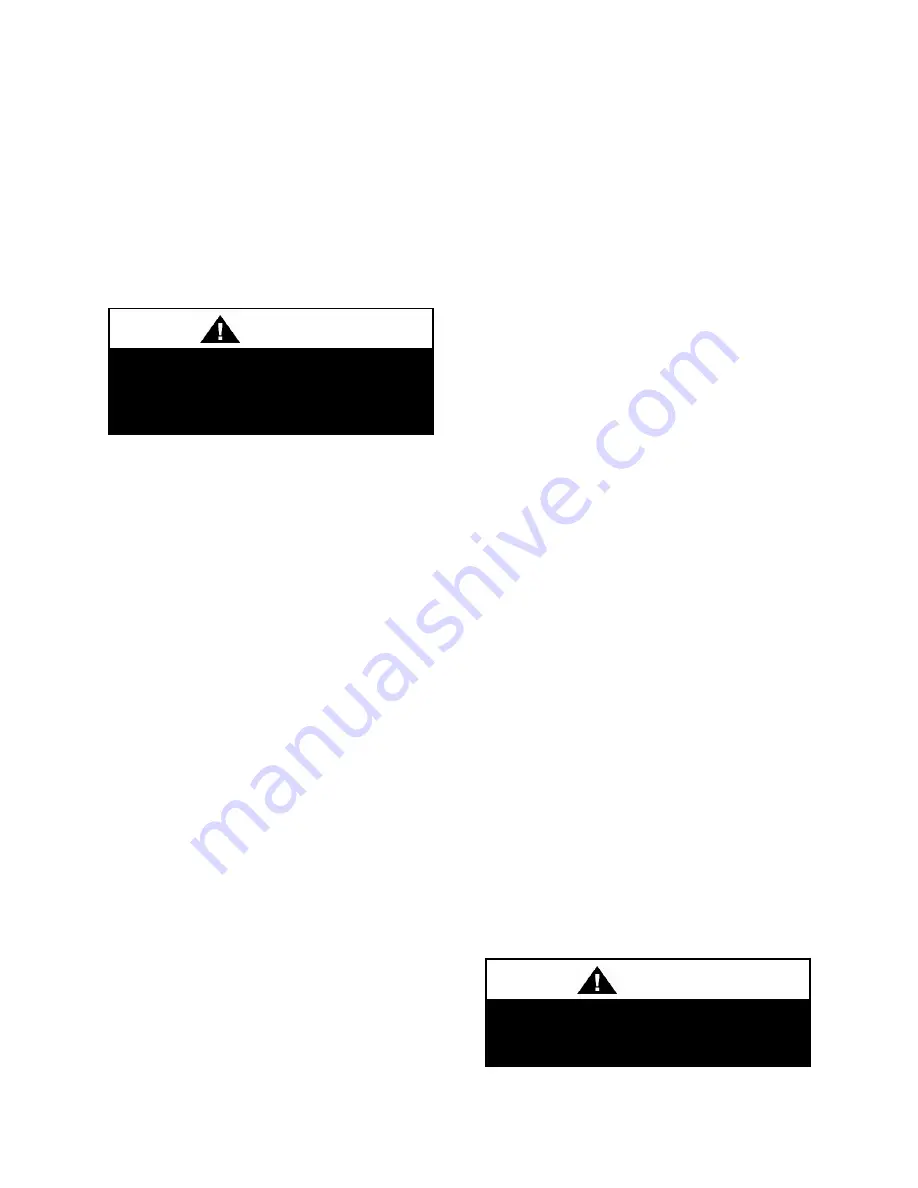
43
Alignment
Alignment is unnecessary on close-coupled
pumps as there is no shaft coupling.
Split-coupled units are accurately aligned at
the factory prior to being shipped and do not
need re-aligning when installed.
Pump Operation
Starting Pump
Ensure that the pump turns freely by hand, or
with some mechanical help such as a strap
and lever on larger pumps. Ensure that all
protective guarding is securely fixed in
position.
The pump must be fully primed on start up.
Fill the pump casing with liquid and rotate the
shaft by hand to remove any air trapped in the
impeller. On split coupled units, any air
trapped in the casing as the system is filled
must be removed by the manual air vent in
the seal flush line. Close-coupled units are
fitted with seal flush/vent lines piped to the
pump suction area. When these units operate
residual air is drawn out of the pump towards
the suction piping.
‘Bump’ or energize the motor momentarily
and check that the rotation corresponds with
the directional arrow on the pump casing. To
reverse rotation of a three phase motor,
interchange any two power leads.
Start the pump with the discharge valve
closed and the suction valve open, and then
gradually open the discharge valve when the
motor is at operating speed. The discharge
valve may be ‘cracked’ or open slightly at
start up to help eliminate trapped air.
When stopping the pump: Close the
discharge valve and de-energize the motor.
DO NOT run the pump against a closed
discharge valve for an extended period of
time. (A few minutes maximum)
Star-Delta motor starters should be fitted
with electronic/mechanical interlocks that
have a timed period of no more than 40
milliseconds before switching from star
(Starting) to delta (Run) connection yet allow
the motor to reach full star (Starting) speed
before switching to delta (Run).
Should the pump be noisy or vibrate on start-
up a common reason is overstated system
head. Check this by calculating the pump
operating head by deducting the suction
pressure gauge value from the discharge
gauge reading. Convert the result into the
units of the pump head as stated on the pump
nameplate and compare the values. Should
the actual pump operating head be
significantly less than the nameplate head
value it is typically permissible to throttle the
discharge isolation valve until the actual
operating head is equal to the nameplate
value.
Any noise or vibration usually disappears.
The system designer or operator should be
made aware of this soon as some adjustment
may be required to the pump impeller
diameter or drive settings, if applicable, to
make the pump suitable for the system as
installed.
Do not run pumps with discharge
valve closed or under very low flow
conditions.
CAUTION
Check
rotation
arrow
prior
to
operating the unit.
CAUTION
Summary of Contents for LN Series
Page 49: ...49 ...
Page 50: ...50 ...
Page 57: ...57 Pressure Temperature Limits Flo Trex Cross Section ...
Page 62: ......

